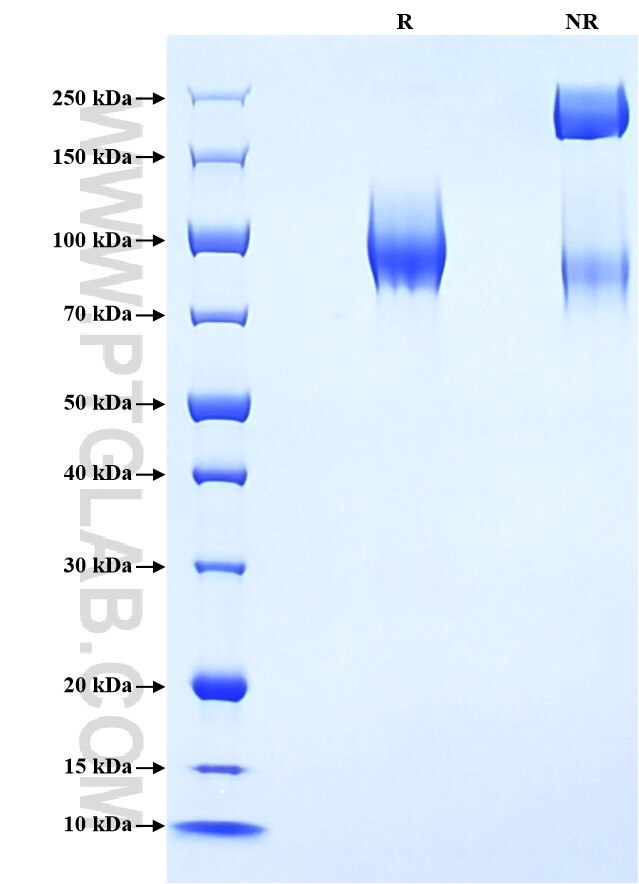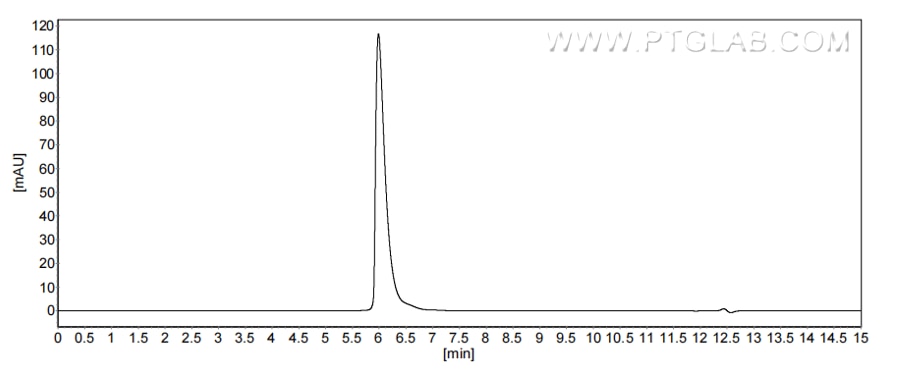Recombinant Mouse CEACAM-1/CD66a protein (rFc Tag)(HPLC verified)
Species
Mouse
Purity
>90 %, SDS-PAGE
>90 %, SEC-HPLC
Tag
rFc Tag
Activity
not tested
Cat no : Eg1423
Validation Data Gallery
Product Information
| Purity | >90 %, SDS-PAGE >90 %, SEC-HPLC |
| Endotoxin | <0.1 EU/μg protein, LAL method |
| Activity |
Not tested |
| Expression | HEK293-derived Mouse CEACAM-1 protein Glu35-Gly428 (Accession# P31809-1) with a rabbit IgG Fc tag at the C-terminus. |
| GeneID | 26365 |
| Accession | P31809-1 |
| PredictedSize | 69.9 kDa |
| SDS-PAGE | 80-120 kDa, reducing (R) conditions |
| Formulation | Lyophilized from 0.22 μm filtered solution in PBS, pH 7.4. Normally 5% trehalose and 5% mannitol are added as protectants before lyophilization. |
| Reconstitution | Briefly centrifuge the tube before opening. Reconstitute at 0.1-0.5 mg/mL in sterile water. |
| Storage Conditions |
It is recommended that the protein be aliquoted for optimal storage. Avoid repeated freeze-thaw cycles.
|
| Shipping | The product is shipped at ambient temperature. Upon receipt, store it immediately at the recommended temperature. |
Background
CEACAM1, also known as BGP1 or CD66a, belongs to the CEA-related cell-adhesion molecule (CEACAM) subfamily, which is a part of the immunoglobulin superfamily. It plays a role in cell-cell adhesion, regulation of cell proliferation, insulin resistance, obesity, and vascular homeostasis. CEACAM1 is expressed by certain epithelial, endothelial, lymphoid, and myeloid cells. It is found on the surface of various tumors and is associated with tumor progression, metastasis and poor prognosis. CEACAM1 serves as a specific biomarker for Non-small cell lung cancer (NSCLC) and can be used for diagnosis and prognosis of melanoma.
References:
1. Muenzner P. et al. (2007). Cell Microbiol. 10(5):1074-92. 2. Rueckschloss U. et al. (2016). Histochem Cell Biol. 146(6):657-671. 3. Dankner M. et al. ( 2017). Oncoimmunology. 6(7):e1328336. 4. Gray-Owen SD. et al. (2006). Nat Rev Immunol. 6(6):433-46. 5. Gur C, et al. (2019). Oncoimmunology. 8(6):e1581531.


